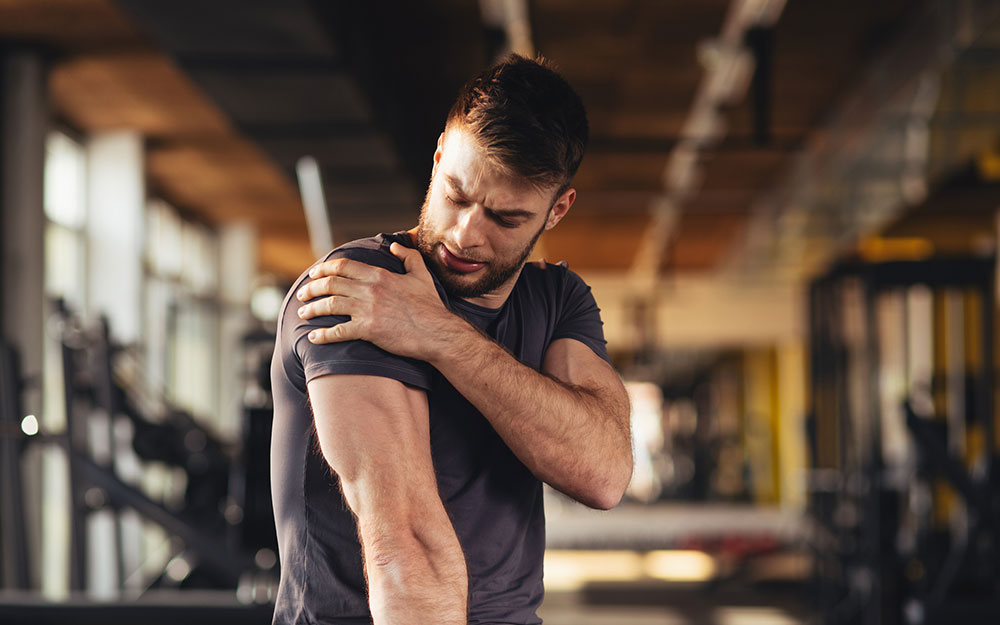Bone Health Break Down: How to Prevent Fractures
Date
May 8, 2023

Date
May 8, 2023
Credits
Medical providers featured in this article

In Brief
{{cta-block}}
More than half of women and a quarter of men over age 50 are at an elevated risk of a fracture due to poor bone health. It’s a problem that is often silent until the snap of a bone breaking.
About 10 million people in the U.S. have osteoporosis, a condition that causes the bones to become thin and porous, and another 44 million have low bone density, which can lead to osteoporosis. The Centers for Disease Control and Prevention estimates more than 300,000 adults age 65 or older are hospitalized each year for broken hips.
Cedars-Sinai established a Geriatric Fracture Program in 2018. It began as a collaboration between nurses, the Department of Orthopaedics, Geriatric Section, the ISP Hospitalist Team and Pharmacy Services to treat older patients with broken bones. Since its inception, the program has expanded to include other primary attending doctors and case management.
“We’ve had great outcomes for our patients over the last five years,” says nurse practitioner Kathleen Breda, manager of the Geriatric Fracture Program who also spearheaded the program’s creation. “We pay attention to some really important things: the four M’s of geriatric care.”
The four M’s are: prioritizing what matters most to the patient, mobility, reviewing medication and mentation—the cognitive function of the patient.
“All the different disciplines work together to focus on a patient to repair their injury and get them on their feet and back home safely,” says Dr. Bradley Rosen, vice president of Physician Alignment and Care Transitions and medical director of the ISP Hospitalist Service.
The clinical team works closely with patients and families to prevent future falls at home and improve bone health.
{{providers}}
Monitor medications wisely
Many people are prescribed a medication for a chronic condition and take it for many years. They do not always ask their doctor how it interacts with other prescriptions, or if the dosage continues to be appropriate for them, Breda says.
“Our bodies change as we age,” she says. “The way we process medications can potentially contribute to a fall and a bone fracture.”
Bone mineral density testing
A bone mineral density (BMD) test, also known as a DXA scan, is the best way to detect low bone density and provide helpful details about risk for bone loss and fractures.
Postmenopausal women and men over 70 years old, as well as anyone with risk factors for osteoporosis, should talk to their primary care physician about having a BMD test.
Medications can also minimize bone loss and reduce the risk of fractures.
Know your risks
Risk breaks down into two categories, says Breda: risk you cannot change, and risk you can.
Age, sex, family history of osteoporosis, previous fractures, menopause, hysterectomy, some medications and certain diseases contribute to low bone density and fracture risk.
Some risk factors that can be changed include smoking, alcohol intake, poor nutrition and inactivity. Smokers have 60% greater risk of hip fracture compared to non-smokers, and 25% increased risk of any fracture, according to the International Osteoporosis Foundation. A sedentary lifestyle also increases risk of falls and fractures.
Positive steps for bone health
Moving more helps keep bones strong, Breda says, and exercise doesn’t have to take an hour at the gym. Just incorporating movement and activity into your routine—parking farther away, taking small walks—will help keep bones strong.
Calcium and vitamin D also are essential to bone health. The National Institutes of Health recommend 1200 mg of calcium daily for women over 50 and men over 70. The NIH also recommends 600 IU of vitamin D for men and women ages 51 to 70, and 800 IU for those over 70.
Keeping bone health in the conversation with your primary care physician is also a wise step, Breda says.
Fall prevention is fracture prevention
Consider your feet if you want to prevent falls. Wear shoes with good traction and avoid walking around in socks. Make sure cords aren’t creating trip hazards. While throw rugs are beautiful accents and pleasing to the eye, they’re the cause of plenty of falls, Breda says.
Getting up too quickly in the middle of the night can also cause falls. If you wake up to use the bathroom or get a drink of water, sit on the edge of the bed for a moment to get your equilibrium, Breda suggests.
“We may always feel like we’re 19 in our heads, but when we get older, we have to start looking at things differently for our bodies,” she says. “If it’s time to put handrails in your bathroom, do it. Wear decent shoes. Use a walker or cane when appropriate, and make sure there’s not a bunch of stuff all over your floors. And stay off ladders.”






